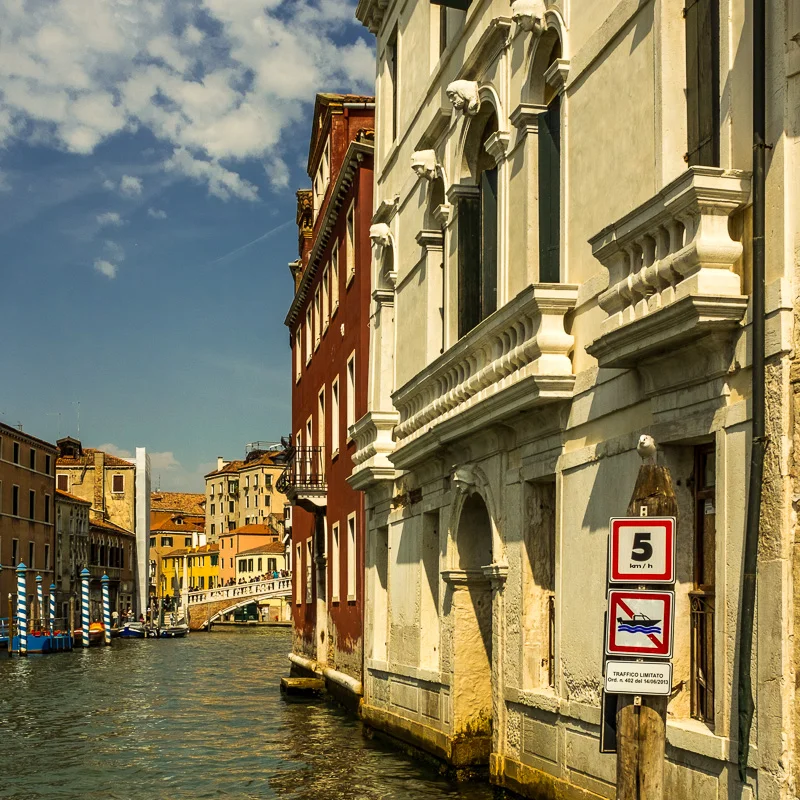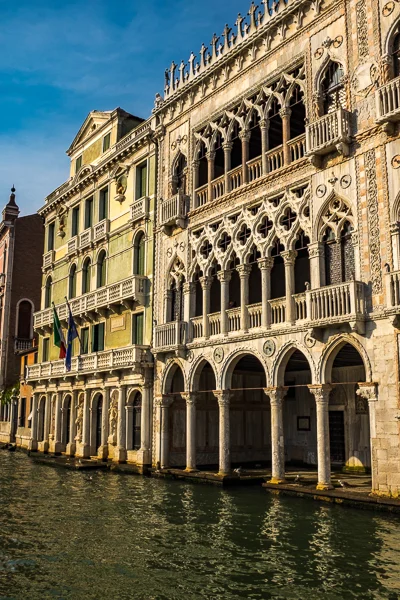Our middle weight bout offers up two cities steeped in history, one under the constant threat of being buried under layers of lava. The other taking measures to keep the sea from swamping its uniqueness. Both cities were on our ‘must visit whilst in Italy’ list, but which one won our hearts?
After finishing our second Italian house sit we headed south for the Amalfi Coast and Naples. Being in the region for three days we were determined to get a taste of Italy’s third largest city. In the end, we managed to devour just a tiny slice of the home of pizza.
On the outskirts of Naples is the ancient Roman town of Herculaneum. Buried in 79AD during the eruption of Mount Vesuvius. Herculaneum is a smaller and quieter version of Pompeii. Yet in its day it was wealthier than its famous neighbour. The eruption preserved many of the fine homes with their mosaic art. Arriving as the complex opened we literally had the run of the site before the tour buses arrived. Your first sight upon entering Herculaneum is a small row of boat sheds. These were once on the shoreline but are now several kilometers from the sea. It’s here that some of the inhabitants sheltered from the encroaching lava. Unfortunately nowhere was safe and now the skeletons provide a grisly reminder of the power of mother nature. The whole town is a fascinating insight into life in Roman times.
Back in Naples, the National Archaeological Museum with exhibits from Pompeii and Herculaneum is viewed as one of the world’s most important archaeological collections. Room after room filled with gigantic statues, mosaic art and other Roman artefacts. Also hidden away is the Secret Cabinet Room. Home to a collection of Roman erotic art rescued from the buried towns. Not one for the faint-hearted, clearly the Romans had a pretty good opinion of themselves, well the men anyway.
We ducked and dived through the gritty yet captivating streets of the Spanish Quarter, crisscrossing the Spaccanapoli (the road that splits Naples). With alleyways, hidden churches and imposing five-storey terraced apartment blocks hemming you in. Everyday life grinding away on all sides, washing strewn from balconies, the air heavy with the smell of food. Late afternoon we found a bar to sit and watch life go by, including the drama of one guy being nudged off his scooter. Taking his cues from Italian football, he laid on the floor for 5 minutes ‘dying’ before Julie waded in and lifted up the scooter. Not even giving her a second glance, he waved his arms at the offending car then continued on his way.
After a long but enjoyable day, we found our way back to the train station where we had left the car. A nearby parking meter still clutching our one and only credit card tightly. One of us thought we could pay with the card; the slot was only for the local prepaid parking cards, oops.
Draw a diagonal line from Naples through the middle of Italy at the other end you will find Venice. We arrived at our base of Mogliano Veneto after several hours in the car, both of us feeling a little cranky. Our AirBnB was a 25-minute train ride into Venice and no sooner had we dropped our bags we went off to explore the city of water.
It didn’t help our mood that our first choice for dinner was fully booked. There’s nothing worse than wandering aimlessly when you are both hangry (hungry and angry). We did eventually find somewhere that wasn’t budget-busting, not easy to do in Venice.
Having found some sustenance we spent our first evening traversing the canals via the myriad of bridges, exploring quiet alleyways and enjoying the architecture.
The following day we jumped on the Vaporetto (water taxi) and cruised the Grand Canal. Being quick off the mark and grabbing a spot by the railing, we got the best views. Maybe not as romantic but certainly cheaper than the €80 plus gondola rides. Looking back, I don’t think we even thought about the lack of cars in the water city. What did surprise us was the choppiness of the water. The equivalent of a pot-holed filled road in the back of beyond.
We caught a ferry over to the ‘colouring book’ island of Burano. A destination that we highly recommend. This small island can be covered in a couple of hours, leaving plenty of time for a lazy lunch. Most of the houses painted in a rainbow of colours. The ferry ride back was jammed to the rafters. Waves of tourists poured on board for the 40-minute ride back to Venice.
At Piazza San Marco (St. Mark’s Square) we arrived too late in the day to visit St Mark’s Basilica, but we did watch the sunset from the Campanile. Despite the thronging hoards in the square below, the bell tower was pretty empty. Mind you the ear-piercing sound of the bells may have had something to do with it. The Campanile provides stunning views across the top of Venice and out to the islands such as San Giorgio Maggiore. From this vantage point, cruise boats drift like toy boats down the outer canal and out to sea.
Wandering back towards the train station, we came across a marvellous little bar called Il Santo Bevitore in the Cannaregio district. Listed as one of the top craft beer bars in Venice it had excellent tasting beer and delicious bruschetta. Just what these weary travellers needed.
So there you have it, just twelve hours in each city. And the winner of our middleweight bout is…drum roll, please…. buggered if we know. We loved both of them. Naples is gritty and steeped in history. Venice, well it’s Venice for heaven sake. If handed a ticket to just one of these crazy cities, our choice would have to be Venice, we feel there is more to discover, while the other slices of Naples would taste pretty much the same. Which is your favourite?
Next Up: Final bout Amalfi Coast vs Cinque Terre, battle of the coastal icons
Heaps more photos on our gallery page Naples vs Venice





















